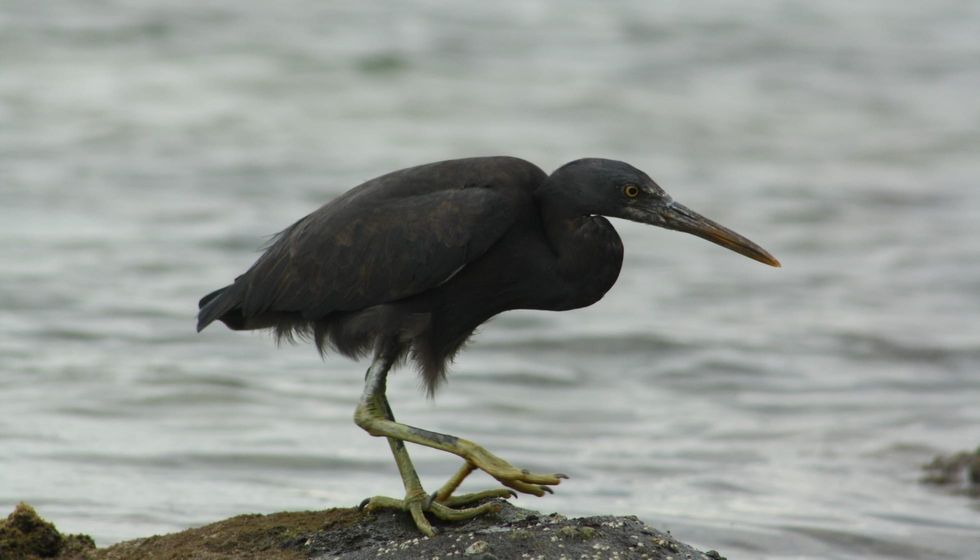Do you find herons interesting? If yes, then Pacific reef-herons should appeal to you.
The Pacific reef heron (Egretta sacra), also known as eastern reef heron or eastern reef egret, is a wading bird and a species of medium-sized herons. The Pacific reef heron distribution includes southern Asia and Oceania.
An eastern reef egret is an ocean-based bird often spotted in coastal areas and islands. An eastern reef egret is a medium-sized heron and its diet includes small fish, crustaceans, and worms. Reef herons are usually seen in solitary but may sometimes be found in small packs, especially when roosting at high tide.
Dimorphism, a thicker brown bill, short length yellowish legs, and a hunched body posture are included in the distinct description of Pacific reef herons. Little egrets and Chinese egrets are the closest species to eastern reef herons.
For more relatable content, check out these green heron facts and palm cockatoo facts for kids.
Pacific Reef Heron Interesting Facts
What type of animal is a Pacific reef heron?
The Pacific reef-heron (Egretta sacra) is a species of heron, a wading bird from the Ardeidae family. They are similar to little egrets.
What class of animal does a Pacific reef heron belong to?
They are wading birds in the heron species. They belong to the Aves class under the family Ardeidae and genus Egretta.
How many Pacific reef herons are there in the world?
There is no quantitative data available on population.
Where does a Pacific reef heron live?
These herons are mostly spotted near ocean shores in the wetlands. They can be spotted along the coasts of India, Southeast Asia, Japan, Polynesia, Australia, and New Zealand.
What is a Pacific reef heron's habitat?
The eastern reef egret inhabits coastal regions like rocky shores and offshore islands. They can also be spotted at mangrove margins, tidal mudflats, beaches, and tidal creeks. Sometimes, they are seen in inland marshes, beaches, and near canals.
Who do Pacific reef herons live with?
The eastern reef heron is not a sociable bird and is a highly territorial species. It typically feeds alone, in pairs, or in small family groups.
How long does a Pacific reef heron live?
A Pacific reef heron (Egretta sacra) can live up to 14 years.
How do they reproduce?
The Pacific reef egret (Egretta sacra) does not have a fixed breeding season. Since they are found across the world, their breeding season depends on their surroundings.
For instance in the northern and southern areas of their territorial range, their breeding is reserved for the spring season. This means that the breeding season depends upon the country they are found in. In the Indian subcontinent, breeding takes place in the months from May to July.
However, in New Zealand, breeding takes place in the range of September to December. The breeding pattern does not hold for Australia and the Pacific Islands as the unique climatic conditions of these areas allow these herons to breed all year round.
The nesting grounds chosen by these birds are near sources of food and usually in places with small trees. It is observed that during breeding this species has a collective change of behavior and these birds which are usually extremely territorial can be found to nest in small colonies consisting of 200 pairs.
The female bird lays two to six eggs during this period. The number of eggs varies from location to location and can range from three to five in Japan to four to five in Australia.
The eggs of these birds are pale greenish-blue in color. The incubation period is around 25-28 days.
Chicks are brooded by parents for few days and the hatchlings are gray or white based on the morph. Chicks leave the nest after three weeks and wander closeby for the first few weeks.
They are continued to be taken care of by their parents. Fledging takes about 50 days from birth and the family group usually breaks by this time.
What is their conservation status?
As per The International Union for Conservation of Nature (IUCN) Red List of Threatened Species Pacific reef herons are listed in the Least Concern category. However, in New Zealand, this bir dis categorized as Nationally Endangered.
Pacific Reef Heron Fun Facts
What do Pacific reef herons look like?
The eastern reef heron (Egretta sacra) is a medium-sized heron species with a length of 22-26 in (55-66 cm). Their wingspan is 36-43 in (90-110 cm) in length. The species exhibits unusual, non-sexual dimorphism, with some having an entirely white plumage called light morph, while others have a charcoal-gray plumage called dark morph.
Most birds have a dark plumage. They have short greenish to yellow legs.
A gray morph's throat and chin have a narrow white stripe. They have a thicker brown bill, golden-yellow eyes, and surrounding areas of their faces are normally of a greenish to yellow cast. White Pacific reef herons do not have this cast.
How cute are they?
These birds lack color variation and they only have two color variants. One is a white plumage light morph, and the other is a charcoal-gray plumage or dark morph. Limited color variation and subtle low-profile body posture do not really make a very cute species of bird.
How do they communicate?
They communicate primarily through acoustic means. The 'ork' call is the feeding call. Various harsh croaks are used between paired birds.
How big is a Pacific reef heron?
Pacific reef herons are smaller than eastern great egrets and intermediate Esrets. In comparison with other birds, its size is similar to a little egret and a Chinese egret.
How fast can a Pacific reef heron fly?
No quantitative data is available related to their flying speed, however, it has been observed that they can fly pretty fast.
How much does a Pacific reef heron weigh?
The weight varies between 12-25 oz (330-700 g). The average weight is around 14 oz (400 g).
What are the male and female names of the species?
There are no different names for males and females of this species.
What would you call a baby Pacific reef heron?
Pacific reef egret juveniles do not have a specific name. However, they can be called chicks or hatchlings, similar to other bird species.
What do they eat?
Their diet consists of varieties of ocean-based small fish, crustaceans, mollusks, and small crabs. The sorts of fish include blennies, gobies, damselfishes, mudskippers and other coral or bottom-dwelling species are included in its food chart. Their diet includes insects, lizards, worms and small birds such as tern chicks.
They silently and slowly walk with a hunched back to search and catch prey. Sometimes they are seen stirring the water to search for potential prey.
This bird fishes visually, stabbing rapidly using its long pointy bill at fish. It also flies down from branches and plunges onto the fish. On shores, this bird feeds by scavenging.
Are they poisonous?
No, a Pacific reef heron (Egretta sacra) is not poisonous.
Would they make a good pet?
These egrets are not very social birds and they prefer to live in solitary. It is rarely heard that someone was able to train and pet a Pacific reef heron properly. They are not a species of birds you want to have as a pet and are best left to thrive in the wild.
Did you know...
This species of heron is a cunning predator. Out of many ways of fishing, they use a clever ploy to catch fish. They spread their wings around in front to create a temporary shadow. Fish are attracted by this shadow and come within stabbing range. The Pacific reef heron stabs and snaps the fish using its bill.
The Pacific reef heron is referred to by several names by native peoples. In New Zealand, multiple names have been given including kakatai, matuku moana, and matuku tai.
What is special about the Pacific reef heron?
This species has an unusual non-sexual dimorphism. Some birds are entirely white, while others are dark gray.
Are Pacific reef herons endangered?
This species of heron has the global status of the least endangered species. However, in New Zealand, they have the conservation status of Nationally Endangered with a population of only between 300-500. Nevertheless, population stability has been identified over the past years.
Here at Kidadl, we have carefully created lots of interesting family-friendly animal facts for everyone to discover! Learn more about some other birds from our brant facts and hoatzin facts pages.
You can even occupy yourself at home by coloring in one of our free printable heron coloring pages.









